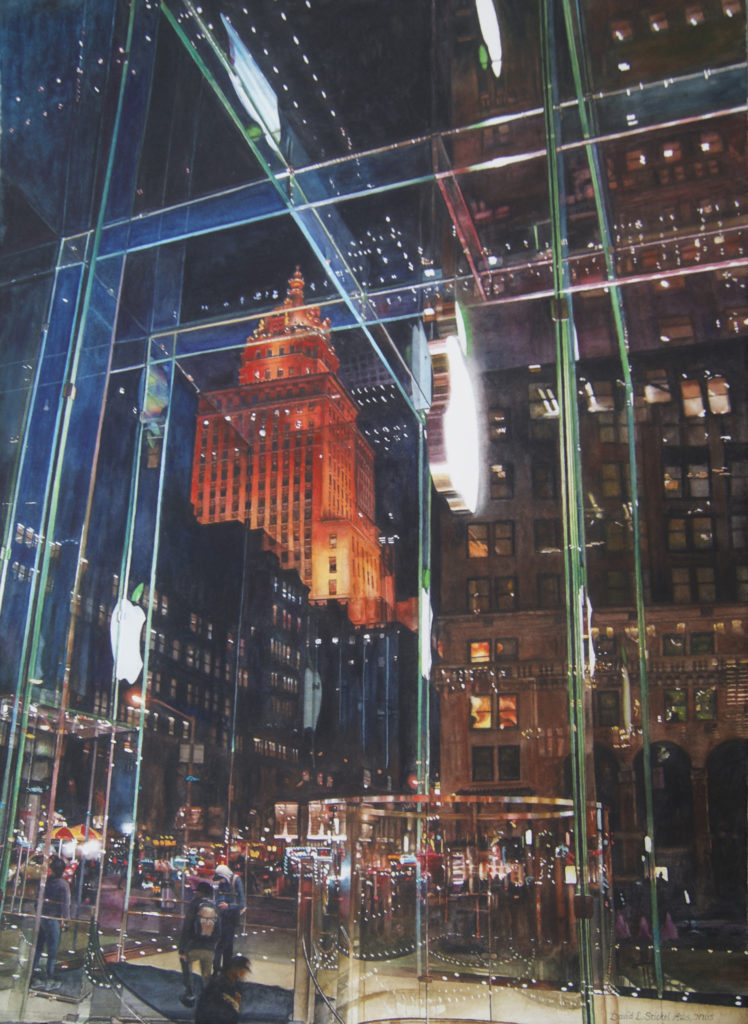
“Reflections are a huge part of our visual diet,” says David Stickel. “They’re everywhere … a store window, the hood of a car, a wet sidewalk, or a puddle in the street after the rain. They can be complex or simple—but they undoubtedly add a huge dimension to what each of us sees every single day.
“I’m not always drawn to the most complex compositions, but I do love the challenges they present. My job is to make them appear as convincing as possible. I work from my own photos, where I’m able to capture these fleeting images in glass or water. In France, my wife once translated for me what several locals were saying as they watched me shoot photos of store windows: “What does he see? What is he looking at?”
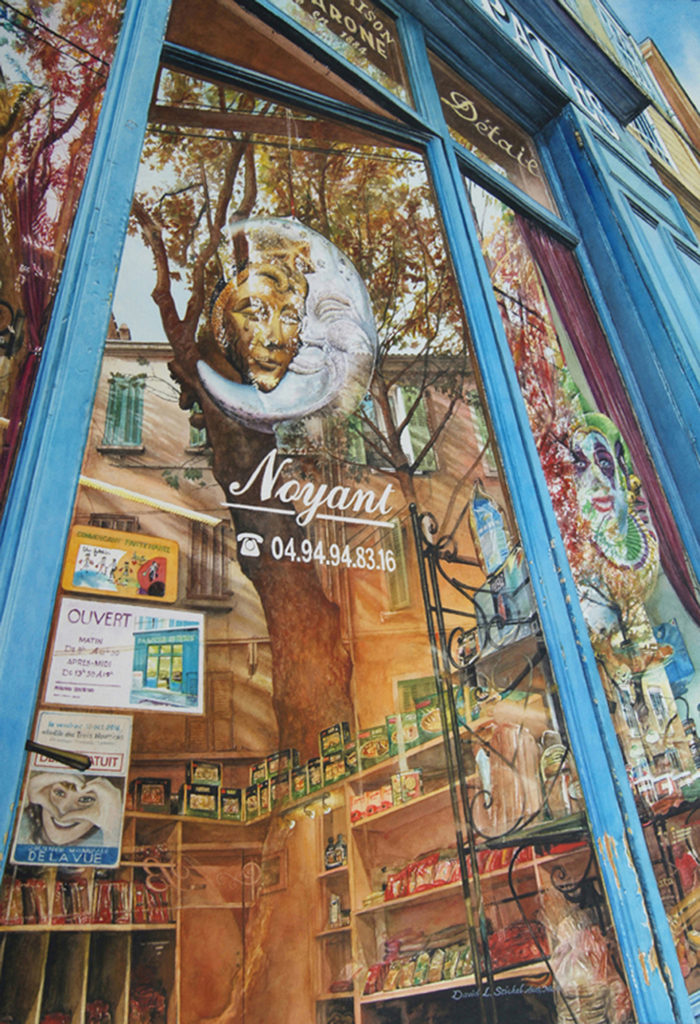
“When photographing a shop window with interesting reflections, I’ll shoot a number of photos from odd perspectives. The viewfinder on my Sony camera flips out enabling me to hold the camera down low to the ground and shoot upward providing me with some wonderfully strange angles. This is opposed to shooting directly into window and the reflections.
“I learned early on that unique perspectives make for much more gripping compositions.
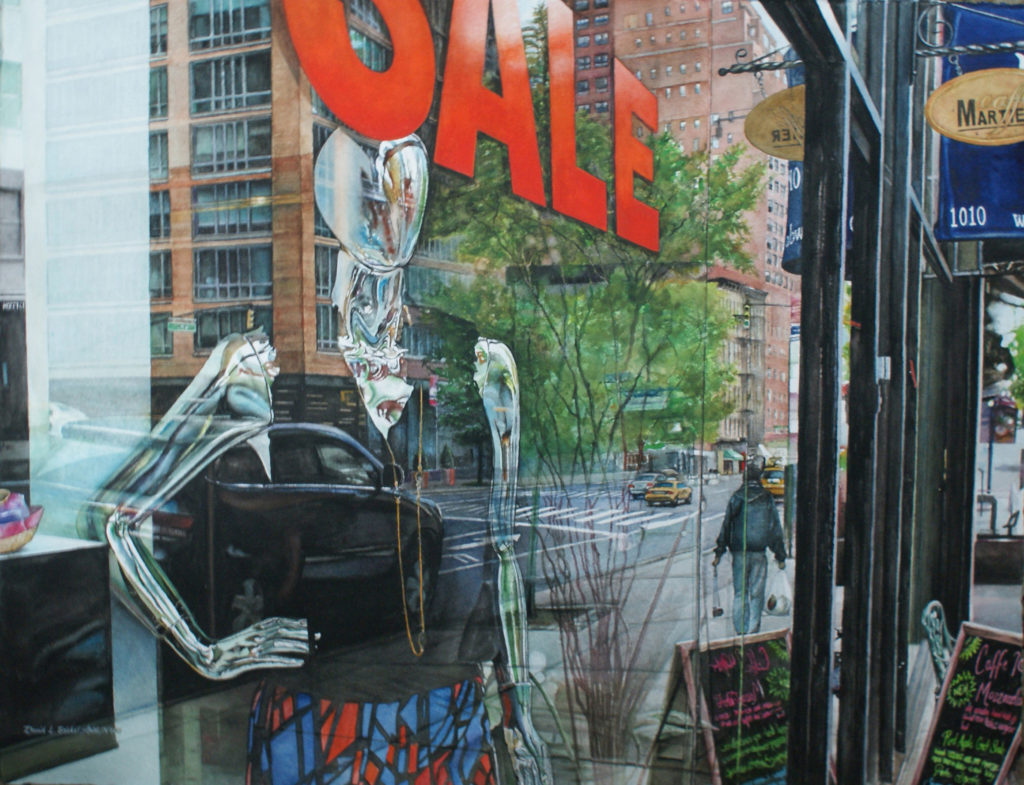
“From here, I decide which composition I want to paint and then print out two to three large photos that overlap at the edges of the window I’m painting. I tape these to a piece of mat board to create a really large image as my reference guide — sometimes as large as 11 x 15 inches. The main lines in the photos usually don’t match up—due to the convex shape of the camera lens, so I have to improvise to make the image look right to me.
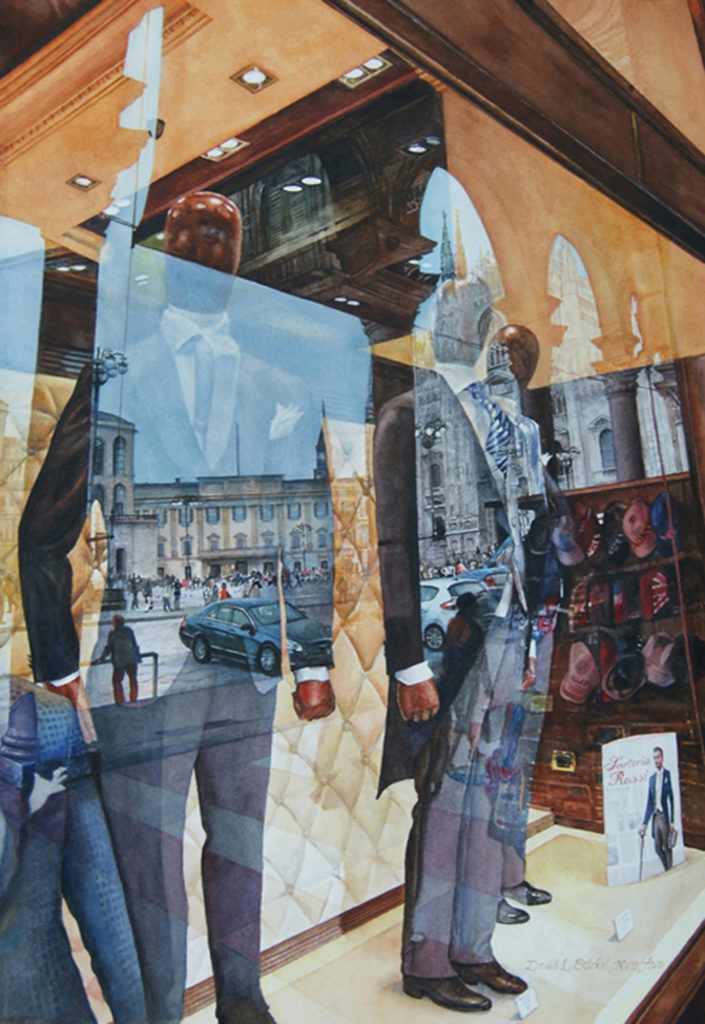
“A critical aspect of painting reflections is careful study and observation as an attempt to understand what I see — rather than what I think I see. This is where patience is vital. Often the images and shapes of some reflections are hardly recognizable. Fortunately for me, I have a large magnifying lens/lamp attached to my table that I’m able to use to further study and “understand” what I’m trying to paint. This understanding makes a huge difference as opposed to just painting forms or shapes.”
How to Paint Reflections in Watercolor
“After I lightly sketch the image on my 300-lb. cold-pressed paper I begin painting. Unlike some watercolorists, I don’t wet large portions of my paper at a time. I look for natural breaks in the image—or dark areas that won’t show the dry lines where I stop — and then work on a small section until it is completed before moving on. Values (lights and darks) are essential to making an image look three-dimentional — not just the image itself, but the context of that image as well. Values affect how we see the objects in the window differently from reflections in the glass, so I try to capture them to the very best of my ability.


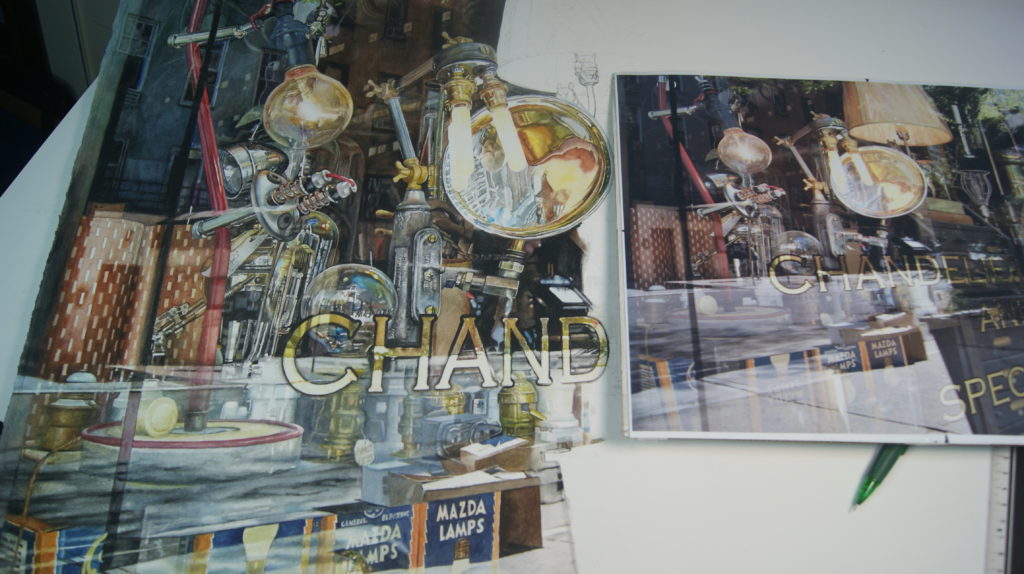
“Lastly, when I do any painting, I bring it into our living area and set it up to study from a distance as we’re sitting around watching a movie or something. At this point, I’m viewing it from a distance which is very telling of what I should do next. For instance, I may see an area that needs to go darker to enable the focal point to be clearer or I may need to lighten an area that is too bold for the reflection to be convincing. This is the way our eyes see all the time and we’re really not even aware of the complexities and nuances that we experience every day. A friend recently expressed it this way, ‘Your art is the best translation of what we take for granted in the beauty that surrounds us, absolutely magical!’ ”

For more watercolor tutorials like this one, sign up for our free weekly e-newsletter.

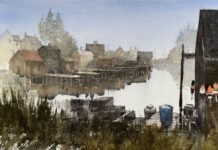






Great newsletter! I look forward to every article like it was a birthday gift. Thank you!